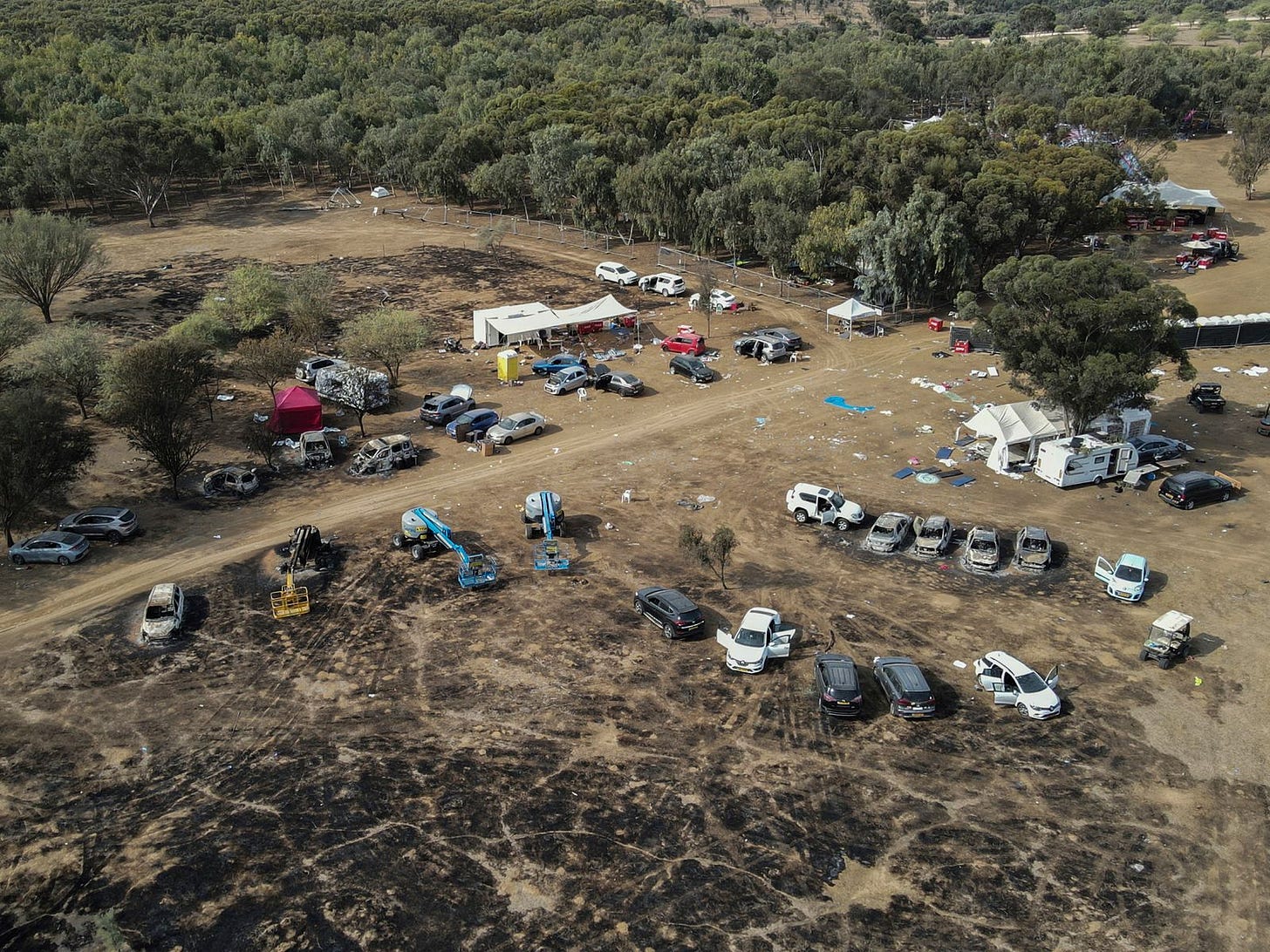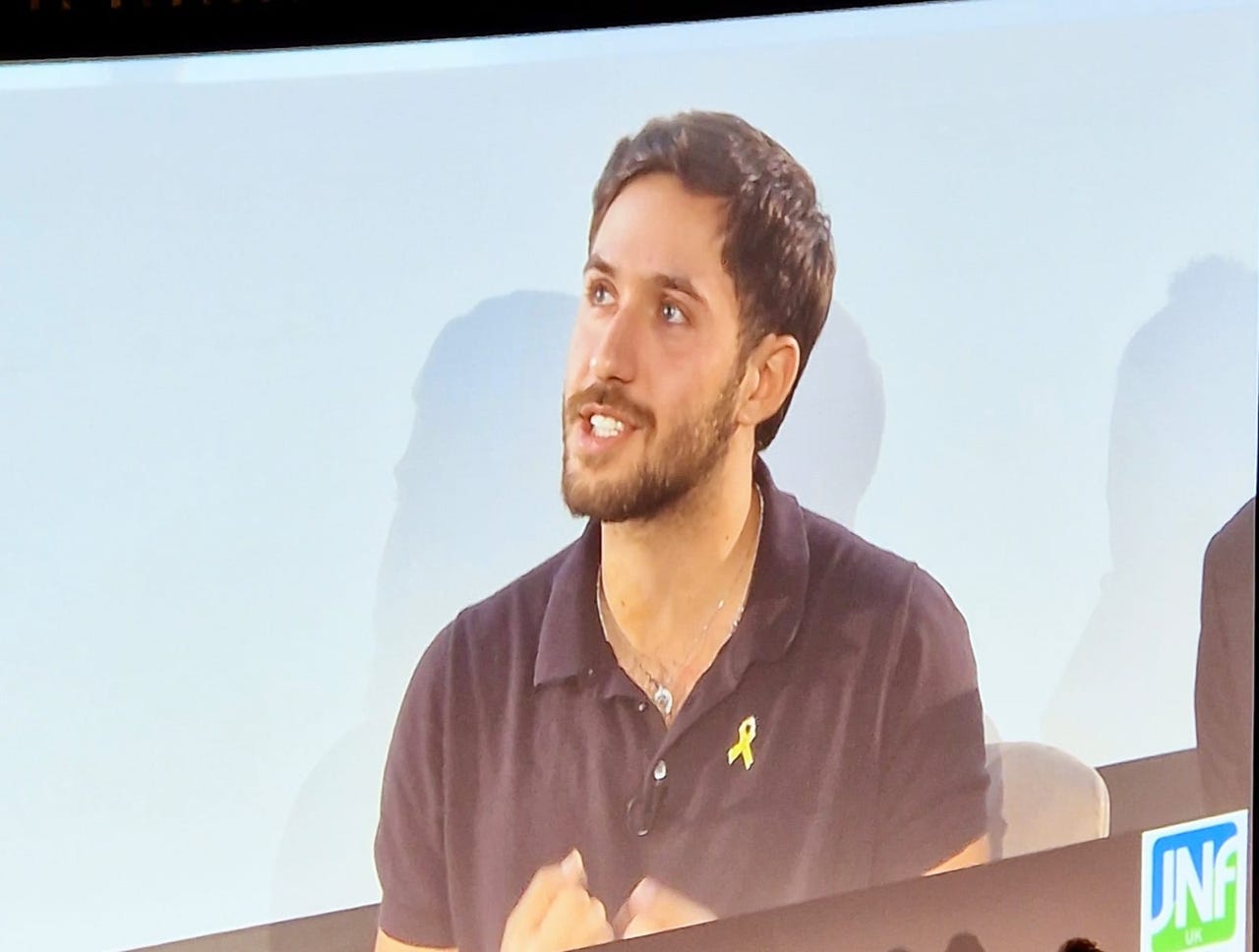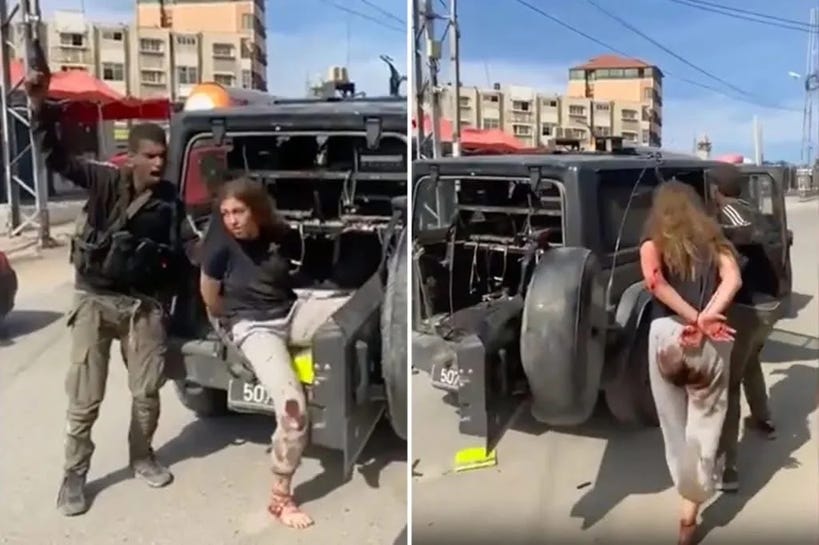Reckoning With the 7 October Pogrom
For All the Upheaval Since, Everything Still Turns on That Day
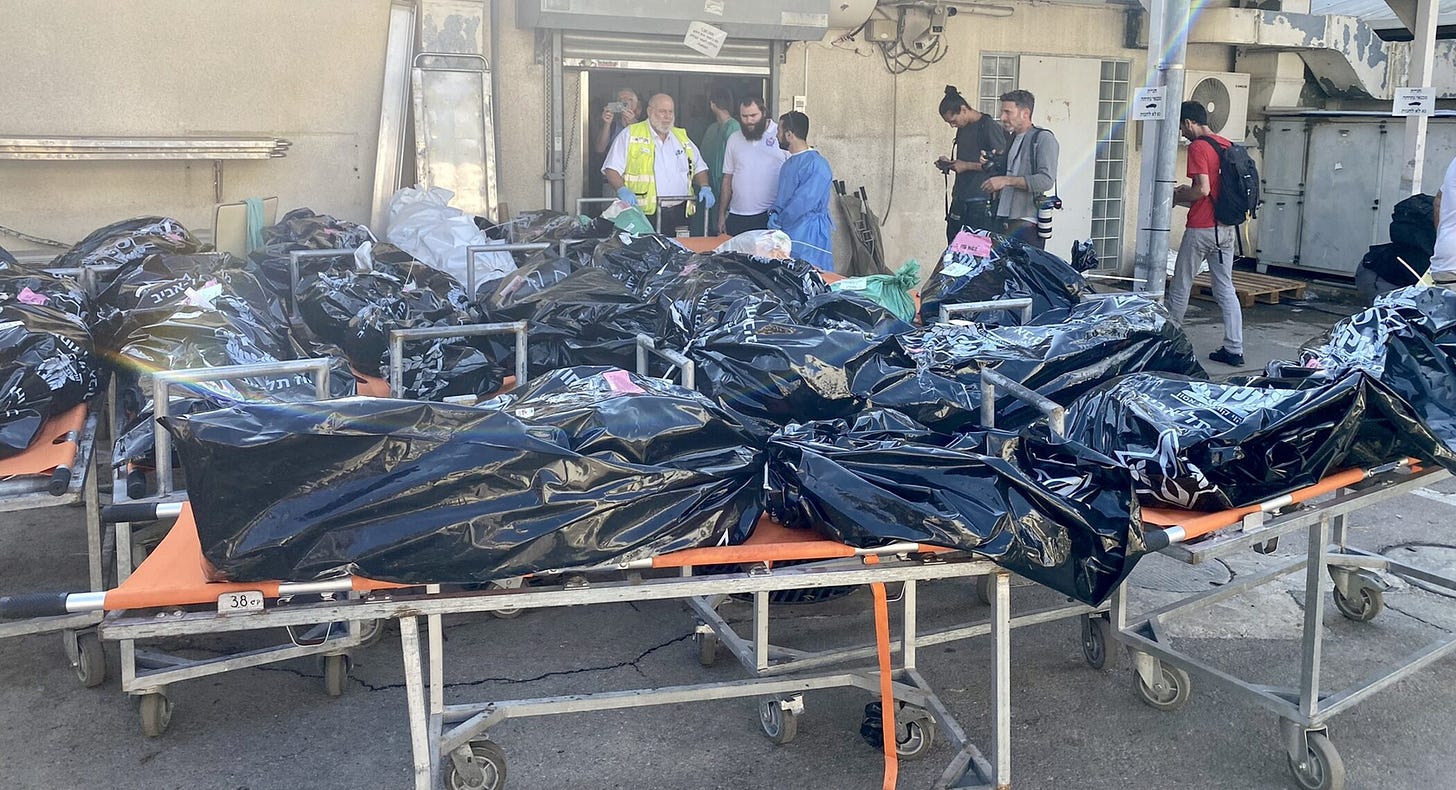
Two years ago today, HAMAS, the premier Palestinian unit of Iran’s Islamic Revolutionary Guards Corps (IRGC), invaded southern Israel and carried out the worst massacre of Jews since the Nazi Holocaust.
THE 7 OCTOBER WAR
Israel’s immediate response was against the terrorist apparatus in Gaza, first with airstrikes and then a ground invasion on 27 October 2023. Jerusalem had for many years tried to compartmentalise the war the Islamic Revolution has waged against the Jewish State since it seized Iran in 1979, and initially it seemed this paradigm would remain in place. But a year into hostilities, Israel changed course and accepted the terms of the IRGC’s jihad. The outcome has in many ways redrawn the strategic map of the northern Middle East.
Hizballah, the IRGC unit in Lebanon that joined the war against Israel on 8 October 2023, was cut down to size and its apparently-untouchable leader, Hassan Nasrallah, eliminated. With the Hizballah support system disabled, the regime of Bashar al-Asad in Syria, which Iran had colonised from within a decade earlier, disintegrated before a lightning insurgent offensive. The IRGC militia state in Iraq, constrained in what it can do by geography apart from anything else, ducked for cover after Asad’s downfall and has since done little beyond issue verbal statements. The IRGC’s “external armies” deterrent neutralised, in June 2025 the logic of Israel’s predicament took the war to the headquarters of the IRGC Network inside Iran.
Israeli intelligence had heavily infiltrated Iran over many years in the lead-up to this and the MOSSAD networks were activated to assist in a devastating air campaign that killed off a large part of the Iranian military leadership and demolished much of Iran’s nuclear-weapons program, including liquidating scientists who possessed crucial know-how. Israel having laid waste to Iran’s air defences and shown there was nothing the Islamic Republic could do vis-à-vis the “wider war” many feared, it provided an opening even so irresolute a leader as Donald Trump could not miss to strike at the one nuclear-weapons site beyond Israel’s reach.
In the aftermath of the “Twelve-Day War”, the only “external” node of the Islamic Revolution still operational in the anti-Israel war is the IRGC’s Ansarallah or “Houthis”, whose colonial administration in Yemen is too entrenched to be seriously destabilised by Israel’s intermittent and sometimes dubiously targeted airstrikes. The lack of Israeli resources devoted to Ansarallah, though, reflects the nuisance-level threat of missiles being fired from 1,500 miles away.
Of course, there can be no durable peace in the region while the Islamic Revolution still rules in Iran. The Lebanese political class will surely squander the margins Israel has bought them for a national life less beholden to the IRGC and even the shattering of the IRGC infrastructure in Syria is open to doubt as a lasting fact. It would take an optimism bordering on the naïve to believe the political stars can align, locally and internationally, to uproot the IRGC in Iraq and Yemen.
Nonetheless, the problem of the IRGC’s imperialism has been diminished for now, as has the nuclear issue, and it has to be acknowledged that the paradigms and guardrails of regional order have collapsed so completely that the range of future possibilities includes the once-unthinkably positive alongside the unthinkably awful. The most encouraging signs in this regard are that Israel appears to have dispensed with its illusions about Russia, Iran’s crucial strategic ally, and the Islamic Revolution problem has been psychologically right-sized. The apocalyptic predictions about what would happen if Tehran was militarily confronted have been discredited. Western leaders now know that options they had previously denied themselves in dealing with the Islamic Republic—especially over the nuclear-weapons program—are available not just at an acceptable cost but at no cost.
A part of what has somewhat obscured this picture is the limitations of Israel’s success on the IRGC front where it all started: Gaza. The necessity for the survival of the Jewish State after 7 October—namely, demonstrating the steep price those who engaged in attacks of this kind would pay—has been achieved. The identifiable implementers of the “Al-Aqsa Flood” operation like Yahya Sinwar had to die; they have. And IRGC/HAMAS’s administrative and military capacity has been battered; its cadres, weapons stocks, finances, rocket-launcher sites, and tunnels all disrupted and destroyed to varying degrees. But outright victory has proven impossible. HAMAS’s ability to control the Gazan population and replenish its ranks for the guerrilla war it has waged from the start have held. After 1,150 Israel Defence Forces (IDF) soldiers have fallen and 3,000 have been wounded, 500 severely, nearly fifty Israelis remain in Gaza as hostages, whose freedom will require a deal that releases numerous gruesome murderers, and HAMAS will survive and exert influence of some kind in the Strip when this is all over.
A more important factor in the widespread confusion than any Israeli deficiency in Gaza, however, is the Israeli failure in the information war over Gaza. Israel’s enemies have all-but eradicated HAMAS from the narrative of the Gaza war and presented the IDF as engaged in an attack on a civilian population that amounts to “genocide”. Israelis are understandably incensed that this political warfare brazenly relies on IRGC/HAMAS propaganda for its central tenets, frequently utilises wilful fabrications, and has involved the Western media, the United Nations, and whole swathes of elite international institutions betraying their own stated purposes to collaborate with terrorists. But morality and truth matter little in geopolitics: this disinformation ecosystem has proven highly effective and Israel has not found an answer to it.
7 OCTOBER
The realities of our fallen world notwithstanding, just for today, on this anniversary, let us proceed as if the truth did matter and remember what actually happened.
After a long and lucrative ceasefire, at 06:29 on 7 October 2023, the day of Simchat Torah, the IRGC units in Gaza led by HAMAS—with Palestinian Islamic Jihad (PIJ) and others alongside it—invaded Israel under the cover of 4,300 missiles fired at cities as distant as Jerusalem. Many of the approximately 6,000 Palestinians, the bulk of them IRGC jihadists supported by Gazan civilians, poured into Israel by land, breaking through the border fence, while others infamously came from the air using paragliders and an attempted naval landing at Zikim was repelled, though not before 17 Israeli civilian beachgoers were murdered, including Yulia Chaban and her husband-to-be Abed Ziyadne (a Bedouin Arab, incidentally). The Islamist rampage through the kibbutzim in the Gaza envelope massacred nearly 1,200 Israelis, and 251 more were kidnapped.
Kibbutz Be’eri was the first target and the conduct of the 300 or so HAMAS-led terrorists, who were carrying documents instructing them to “kill as many individuals as possible and capture hostages”, set the template. Over-100 civilians were slaughtered and 32 were taken hostage from a community of 1,000 people. Pedestrians were killed on the street, doctors in their surgeries, children in their bedrooms. HAMAS murdered Ohad Cohen in his home; his wife, Sandra, miraculously survived being shot but 9-month-old Mila in her arms did not. Ohad’s elderly mother, Yona, was also murdered—three generations of one family. 80-year-old Avlum Mils, tortured in his house for hours by the terrorists, the fingers of his left hand cut off one by one, died with his daughter pleading for him to stay awake.
Holocaust was a major feature of the HAMAS attack on Be’eri, the burning of Jews—some of them alive—as an offering to their God, as it would be everywhere else. 125 homes were set on fire; those who tried to escape were shot by HAMAS death squads, and then incinerated. 12-year-old Liel Hatzroni was among those eventually identified; other Israelis were reduced to ashes, sometimes with everybody who had known them. HAMAS even killed the pets. A carnival of destruction and looting, much of it carried out by Palestinian civilians, proceeded in parallel. The only word residents had for what had happened was “pogrom”. The IDF, caught off-guard, did not restore control in Be’eri until the evening of 8 October: 31 soldiers and kibbutz security were killed getting the terrorists out.
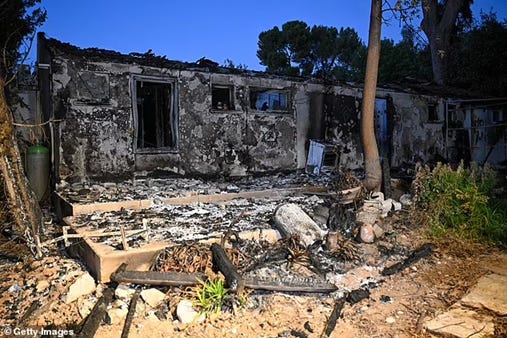
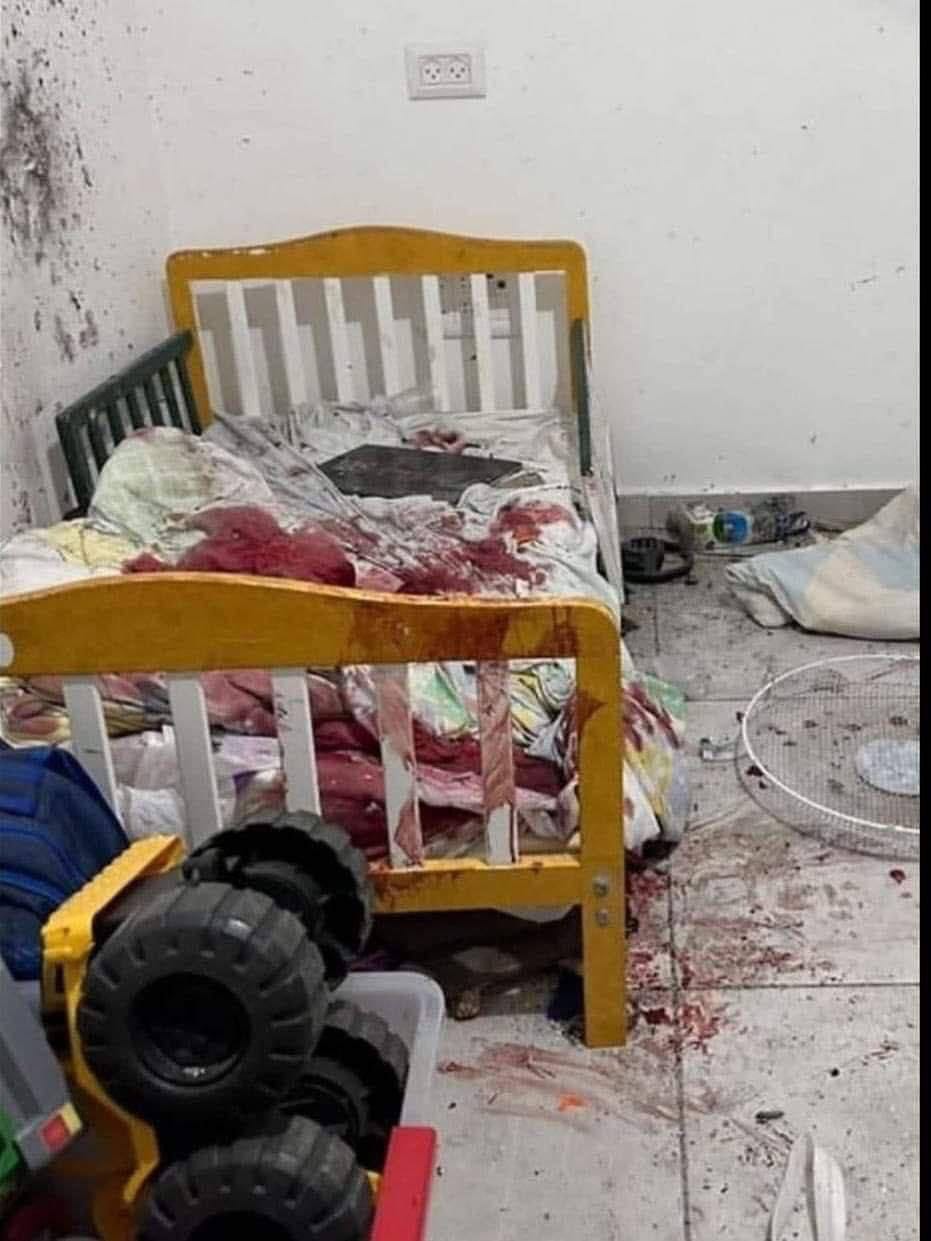
Under-ten minutes after the attack on Be’eri began, around 07:00, the terrorists arrived near Kibbutz Re’im at the Nova music festival, a transcendental overnight rave celebrating “love and infinite freedom”. Several thousand young people, overwhelmingly associated with the peace movement and other Left-wing causes like environmentalism, were surrounded:
While rockets rained down, … militants converged on the festival site while others waited near bomb shelters, gunning down people who were seeking refuge. … Videos … show armed men plunging into the panicked crowd, mowing down fleeing revelers with bursts of automatic fire. Many victims were shot in the back as they ran. … Festival-goers who managed to make it to the road and parking lot where their vehicles were parked found themselves trapped in a traffic jam, with militants stalking the cars and spraying those inside with gunfire.
16-year-old Ruth Peretz, wheelchair-bound and suffering daily because of her congenital cerebral palsy and muscular dystrophy, found happiness in attending music concerts with her father, Erick: they were perhaps the most defenceless victims of the HAMAS-led killer brigades at the Nova festival.
It took the IDF six hours to clear the area, during which many of the party-goers hid in forests surrounding the site as the HAMAS Einsatzgruppen roved around, murdering most Jews they found—more than 350 in the end—and taking 44 hostage.
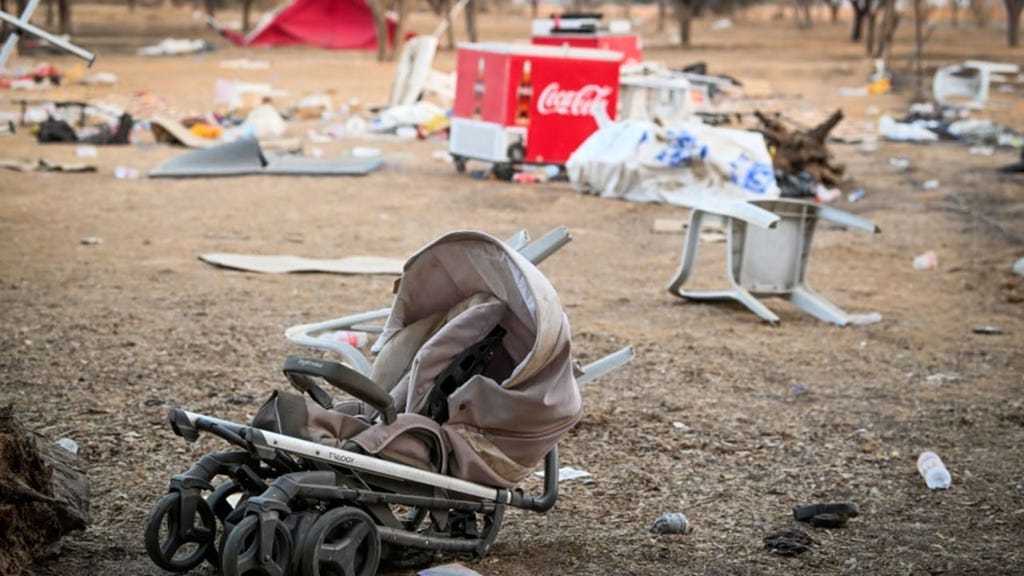
Hersh Goldberg-Polin, an Israeli-American, was among those taken. A dedicated peacenik—his room was decorated with artwork reading, “JERUSALEM IS EVERYONE’S”, in English, Hebrew, and Arabic—Goldberg-Polin was celebrating his 23rd birthday on 7 October; the last video of him shows him being thrown onto the back of a truck with his arm blown off. Goldberg-Polin and five other helpless hostages were slaughtered by HAMAS as the IDF closed in on their position in Gaza in August 2024. Omer Shem Tov, days short of his 21st birthday, was another Israeli abducted, along with his brother and sister. His siblings were released in the first ceasefire in November 2023; he was finally freed in February this year.
There was worse, as Yoni Saadon, one of the survivors, saw from his hiding place:
I saw this beautiful woman … and eight or ten of the fighters beating and raping her. She was screaming, “Stop it—already I’m going to die anyway from what you are doing, just kill me!” When they finished they were laughing and the last one shot her in the head
Another female witness described seeing the terrorists raping a woman “and simply passing her on to the next”: the last man “shot her in the head while he was raping her, didn’t even lift his pants.” Whether this was the same gang-rape witnessed by Saadon is unclear.
Ron Freger heard the rapes from the pit he was hiding in. So did Tali Biner. While hiding in a caravan, Biner heard the sounds that “went on for a few minutes, which felt like hours, and ended in a spray [of bullets]”. After the IDF arrived and she was able to see outside, visuals were added to the audio: “women with their legs spread, their underwear pushed aside, and the shirt ripped off their bodies.” Rami Shmuel, one of the organisers of the Nova festival, described seeing the same as he fled: “Their legs were spread out and some of them were butchered.”
Raz Cohen, hiding behind a bush in a stream at the Nova grounds, saw a van arrive, from which emerged several terrorists, who grabbed “a girl”:
When they pull down her pants halfway and four men form a semi-circle around her, holding her still while one makes raping motions, you know what you’re seeing. … [I]t lasted almost a minute. At some point, he pulled out a knife, stabbed her, and I saw she wasn’t moving anymore, she was actually a corpse, she had been murdered. He continued to rape her a bit more, and then he let her go.
At least one captured terrorist admitted his comrades were “having sex with dead bodies”. When asked about the rapes of Israelis, the terrorists consistently explained that the purpose of the rapes was to “dirty them”—and to “sow fear”, as with the beheadings.
A witness known as Sapir saw a woman raped by multiple terrorists: “every time she flinched, he plunged a knife into her back. Another woman was “shredded into pieces”: “One continues to rape her, and the other throws her breast [he has cut off] to someone else, and they play with it, throw it, and it falls on the road.”
Anyone who saw the videos on 7 October knew what HAMAS had done. There was the image from the Nova killing fields of Shani Louk, a 22-year-old German-Israeli, nearly naked, her dead body splayed out on the back of a truck amid a howling mob. Or the sight of 19-year-old Naama Levy’s bloody trousers as she was dragged away to Gaza from Nahal Oz, north of Re’im.
But, since the systematic rape and sexual torture HAMAS and the other terrorists perpetrated against Israelis is almost the only aspect of the 7 October pogrom over which the anti-Israel activists, whether Leftists or Islamists, feel any shame, there have been elaborate efforts to suppress reporting on the subject and a vast campaign of denialism. The anti-Israel activists called the eyewitnesses liars, said the terrorist confessions were coerced, and claimed the lack of rape victims speaking on their own behalf was proof there were none, knowing full-well the reason virtually nobody who had been sexually attacked by HAMAS could speak for themselves was that most of them had been murdered or kidnapped after the crime.
As any morally sane person knows, there is also the disinclination of rape victims to make themselves a public figure on the point twelve hours—or twelve years—after it has happened. In the event, a victim of sexual violence at Nova did come forward and it was a man:
They [HAMAS’s elite Nukhba unit] pin you to the ground, you try to resist, they take off your clothes, laugh at you, humiliate you, spit at you. They touched [private] parts, they rape you. There is a circle, [people] laugh, and you don’t know what to do in the moment, whether you should resist or let it pass, how to deal with the situation. … At some point more people arrived and called for them and so they had to stop
It had been known men were among the victims from late 2023, when the few survivors of HAMAS’s sexual attacks had spoken privately to investigators.
The evidence of HAMAS’s use of rape as a weapon in its anti-civilian warfare all across the area of southern Israel that it attacked was not limited to eyewitnesses. It was self-evident to those sent to recover the bodies immediately. A morgue worker described the scale and violence of what had happened, the rapes “so brutal that they broke their victims’ pelvis—women, grandmothers, children.” In homes all throughout the kibbutzim, female bodies were found tied to beds, naked at least from the waist-down, and with a horrifyingly frequency HAMAS mutilated the sex organs of women and girls they had molested. Several female IDF soldiers at the Nahal Oz base, one of the few military sites HAMAS attacked, were “shot in the crotch and intimate areas”.
Indeed, another grim complication in the evidence-gathering process was precisely HAMAS’s savagery, butchering and burning the pogrom victims so horrendously that ZAKA and other first-responders were more pre-occupied with trying to discover which body-parts belonged with which others to enable families to keep to Jewish custom by burying their loved ones the next day, rather than preserving forensic evidence. Which, to be fair to ZAKA, is not their job. Usually police accompany ZAKA to crime scenes to take evidence for prosecutions before ZAKA move the bodies, but especially up to 9 October, when HAMAS still occupied parts of Israel, ZAKA was largely on its own. There was also the problem of booby-trapped corpses. When ZAKA volunteers found “the body of a woman at Kibbutz Be’eri, lying facedown on a bed, unclothed from the waist down[,] … shot in the back of her head”, they knew what had happened and took pictures for official records, but their focus was on identifying the already-decaying body and getting it to the family.
The technical lapses in ensuring a chain of custody for semen samples and requesting autopsies amid the chaos, plus the immediate burial of many bodies, are unfortunate insofar as they provide fodder for denialists, but then, there are still Holocaust-deniers, too. Foreign journalists visited the massacre sites, saw the pictures and videos gathered by police, spoke to medics, and visited the morgues. Witness testimony is overwhelming and after release Agam Goldstein-Almog was able to speak about HAMAS’s continuing sexual attacks on the hostages, including her. The physical and forensic evidence has been publicised. Independent Israeli rights groups and academics, and the British Parliament, have all documented the systematic sexual violence on 7 October, and even the United Nations (grudgingly) acknowledged HAMAS’s rapes “were not isolated incidents”. At a certain point, those uninterested in evidence and reality have to be excluded from the conversation.
“Open my WhatsApp now and you’ll see all those I killed”, said HAMAS operative Mahmoud Afana from Kibbutz Mefalsim during an intercepted phone call to his father. “Look how many I killed with my own hands! Your son killed Jews! … Dad, I’m talking to you from a Jewish woman’s phone.” The phone belonged to Liraz Assulin, who had escaped the Nova hecatomb. Afana went on: “I killed her and I killed her husband. I killed ten with my own hands!” Afana excitably repeats the sentiments and his mother is then put on the phone. “Mum, your son is a hero”, he says, and she agrees. The phone handed on to a brother, Afana concludes, “My mother gave birth to me for the deen [i.e., Islam]”, a duty he clearly feels his actions fulfil. (Presumably Afana also thought martyrdom was among the religious ideals and that was achieved last month.)
Ethan Kapshetar from Dimona would have been 5-years-old on 8 October 2023. To mark the occasion, he was taken by his parents, Evgeny and Dina, with his 8-year-old sister, Aline, to Park Ashkelon for a camping trip over the Simchat Torah holiday. When the HAMAS-led invasion began, the Kapshetars packed up and started driving home, but they were intercepted shortly after 07:00 by the terrorists at a junction near Sderot. The entire family were pitilessly slaughtered at close range by a HAMAS killer squad. Little Aline’s body was so ravaged, it took ten days to identify her. HAMAS’s storming minutes later of Sderot, the “capital of the Gaza envelope” that has regularly been bombarded by HAMAS since it took over the Gaza Strip in 2007, led to the massacre of 53 Israelis, 37 of them civilians, including a group of 13 pensioners. The Islamists took no hostages in Sderot.
Nahal Oz was exceptional in a different way: the small kibbutz security force, reinforced by the fluke presence of eleven members of Yamam, the police counter-terrorism unit, largely defended the 450 residents from the 200 HAMAS-led attackers, but property damage was still extensive and there were casualties. Four defenders and 15 civilians were killed, and eight civilians abducted. Shouting “we don’t shoot” (in English), HAMAS shot Maayan Idan in the head as they invaded her home, then made her family—parents and two siblings, aged 11 and 9—sit on the floor, near Maayan’s bloody corpse and surrounded by the balloons put up to celebrate her 18th birthday, while they livestreamed the scene on Facebook for nearly half-an-hour, one of several such broadcasts designed to celebrate the Islamists’ crimes and terrorise Israelis. When the terrorists left, Tsachi Idan, Maayan’s father, was taken with them as a hostage, still covered in his daughter’s blood.
The defence of Nahal Oz Kibbutz is the more remarkable because HAMAS had neutralised the nearby Israeli military base it relied upon. Days before 7 October, soldiers at Nahal Oz base had been alarmed by the complete halt in HAMAS activities on the other side of the border fence, just 1,500 feet away, but could not decipher its meaning in time. Then there were various problems with equipment and preparations once the attack was underway. 53 IDF soldiers were killed and 10 taken hostage. It would have been worse if not for the actions of three tank crews outside the base. One crew, led by Israeli-South African Daniel Peretz (23), fought HAMAS between the base and the border, killing dozens of terrorists while buying the base precious time and hindering the abductions until an anti-tank missile hit them. Peretz, Tomer Leibovich (19), and Israeli-American Itay Chen (19) were killed, and notorious footage shows the severely-wounded fourth crewman, Israeli-Bulgarian Matan Angrest (21), being dragged unconscious as Palestinian civilians try to lynch him and celebrate atop the tank. Angrest somehow survived and remains among the living hostages; the bodies of Peretz and Chen were also stolen by HAMAS. Leibovich was found dead in the tank a few days later.
When terrorists swarmed Gil Taasa’s home in Netiv Ha’asara, he grabbed his two sons, Koren (12) and Shay (8), and ran to the bomb shelter in the garden. As CCTV footage shows, HAMAS threw a grenade into the shelter. At the Nova grounds and in many homes in the kibbutzim, bomb shelters became death traps. Gil managed to shield his boys by sacrificing himself. The boys were then brought back into the house, undressed, wounded, and crying. Murdering, torturing, and raping parents in front of children and vice versa was routine for HAMAS, as one of the terrorists showed when he calmly walked past the Taasa boys and got a drink from the fridge. Unknown to Gil, his first-born son, Or, had been murdered earlier while fishing down at Zikim beach.
Adi Vital-Kaploun, an Israeli-Canadian, managed to warn her husband and father to stay away from the house before she was shot dead in front of her two sons, 4-year-old Negev and 4-month-old Eshel. Another 11 civilians, three of them foreign labourers, were murdered in Kibbutz Holit, a village of under-250 people. Seven hostages were taken.
In Kibbutz Kfar Aza, Hadar and Itay Berdichesky were murdered saving their 10-month-old twins: Itay was found in a pool of blood by the cribs. Batia Holin, a peace activist who had worked for most of her 71 years to foster coexistence between Jews and Arabs, received a call from the Gazan photographer she had staged an intercommunal exhibition in Kfar Aza with earlier in 2023. Holin thought he called out of concern; he was trying to locate her so he could murder her. Elsewhere in the kibbutz, the Kutz family—Livnat and Aviv, their 18-year-old daughter Rotem and their sons Yonatan, 16, and Yiftach, 14—were found huddled together, all dead.
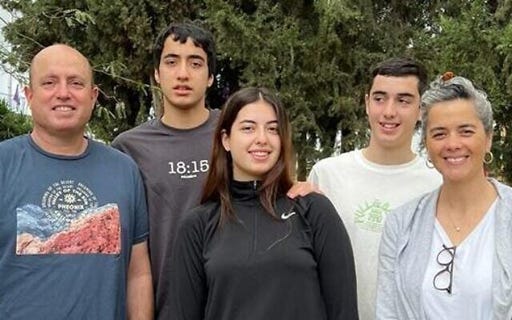
The oldest hostage, 86-year-old Shlomo Mansour, was already dead when he was taken from Kibbutz Kissufim, part of HAMAS’s cruel and cynical use of Israel’s national culture of not even leaving its dead citizens behind against it.
Kibbutz Nir Oz, a village of 400 people, was invaded by 500 Palestinians on 7 October; the ratio of terrorists to civilians is unclear. Local security fought bravely but were overcome; the IDF catastrophically botched its response. Without defences, the death and destruction, and the rapes, were particularly concentrated in Nir Oz. The terrorists and their civilian accomplices entered all-except six of the 100 homes in the village. 47 Israelis were murdered, six of them having fled from the Nova festival.
The entire Siman Tov family were slaughtered in their home in Nir Oz: as the house was on fire, HAMAS shot the parents through the window and the three children—5-year-old twin girls and 2-year-old Omer—were consumed in the inferno. The house of Carmela Dan, 80, was destroyed as she and her 12-year-old autistic granddaughter, Noya Dan, visiting from Kibbutz Kissufim, were taken by HAMAS. Their fate initially unclear, Noya’s case gained some attention because she was a Harry Potter fan and J.K. Rowling called for her release. Unfortunately, HAMAS had already murdered Naya and her grandmother, two defenceless female captives, and dumped their bodies just inside Gaza. Footage from Nir Oz of a HAMAS terrorist beheading a murdered Jew with a small knife helped solidify the Israeli view of HAMAS as equivalent to the Islamic State.
76 people were abducted from Kibbutz Nir Oz, nine deceased, including Ronen Engel. Among the living hostages taken were Yarden and Shiri Bibas, and their two sons, 4-year-old Ariel and 9-month-old Kfir. The Bibas family became a symbol of the hostages’ plight. Yarden was released in February; he had been tormented by HAMAS telling him his family were dead. It was true. When they were handed over later in the month, it was found a HAMAS operative had strangled the two babies with his bare hands, then “shattered” the bodies to try to disguise the cause of death.
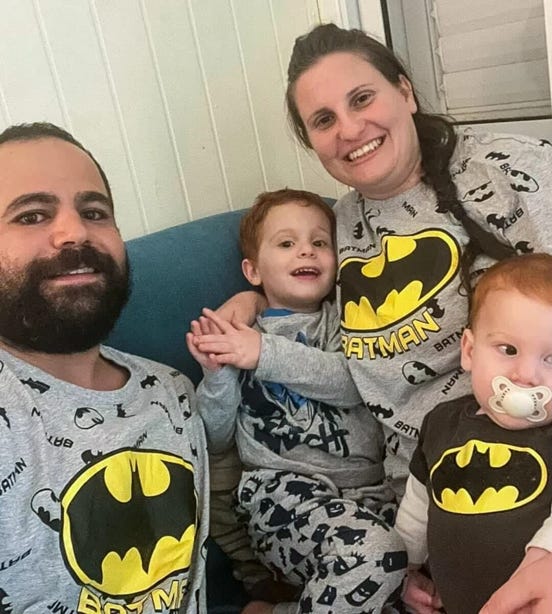
On and on and on it went. The HAMAS-led forces assaulted twenty towns in Israel and in every place the story was the same. The Palestinian killers, terrorists and civilians alike, in ecstasy as they slaughtered, tortured, raped, looted, and burned. If the precedents of “international law” are followed, notably over the Srebrenica massacre, then 7 October was an act of genocide. This was not a consideration that weighed on anybody at the time, though—or since, for that matter.
Contrary to the myth-making that Israel received a wave of sympathy after 7 October that evaporated because of its actions in Gaza, in the days after the pogrom, the only use of the term “genocide” was against Israel. This was of a piece with the broad popular reaction around the world, including in cities across the West, to seeing Jews suffer, which was a level of ecstasy exceeded only by HAMAS while inflicting it. In Sydney, while HAMAS still held territory within Israel, the main chant of the “pro-Palestinian” revellers was, “Gas the Jews”. Ripping down posters of the Israeli hostages became a craze.
There has been a great deal of effort over the last twenty-four months to obscure the memory of 7 October, to bury it under layers of “contextualisation” and distortions over cause and effect, as indicated above. Still, in this information campaign—the attempt to reverse perpetrator and victim while the State was still sorting through the piles of body-parts, and to cast any defensive action, long before an IDF soldier set foot in Gaza, as “genocide”—one can see the tribute that vice pays to virtue. The activists correctly recognised that 7 October was what this war is about. Israel’s enemies want to see 7 October repeated until the Jewish State is annihilated, and Israel wants to prevent that. The question is who prevails. Everything after that is details.
Post has been updated about Liraz Assulin, the Kapshetar family, Nahal Oz, and Adi Vital-Kaploun


